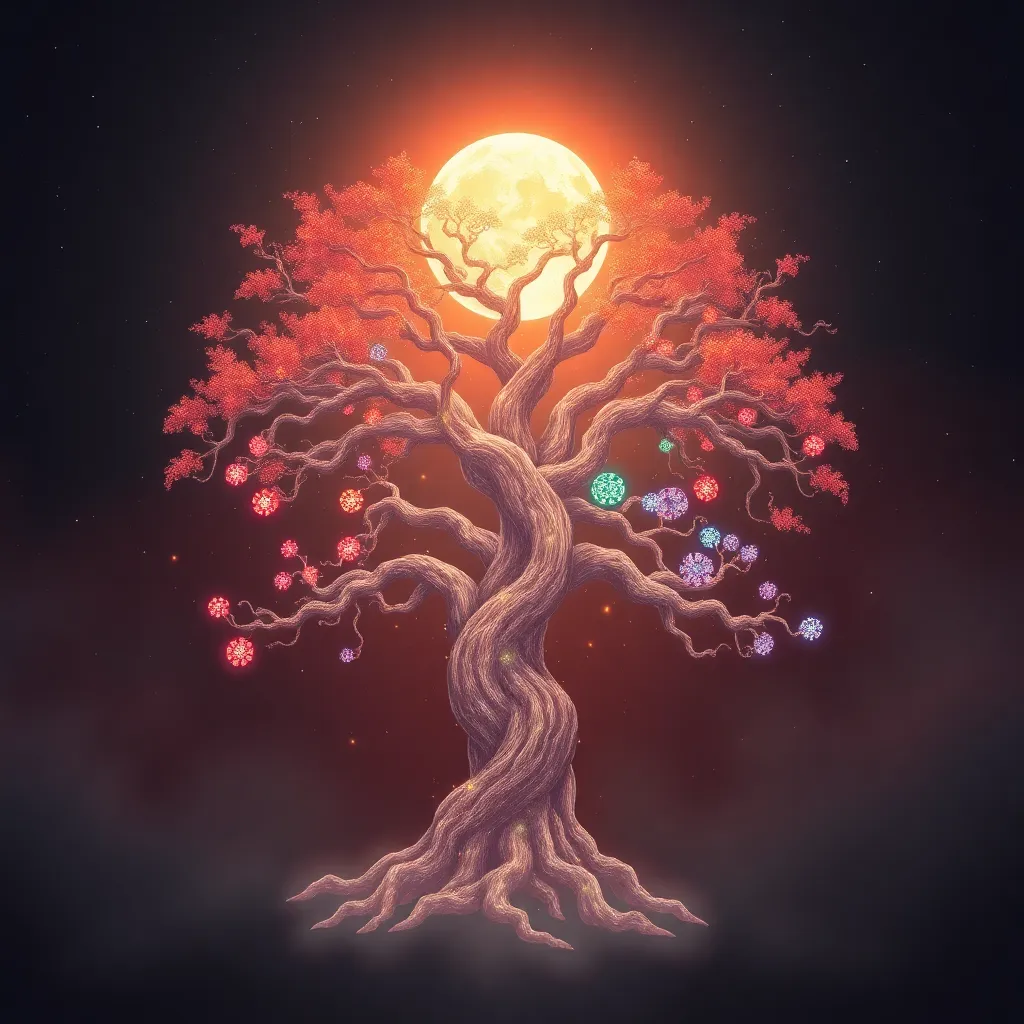The World Tree in Chinese Mythology: The Cosmic Tree and the Five Elements
I. Introduction
The World Tree is a profound symbol found in many mythologies across the globe, often representing the interconnectedness of life, the universe, and the sacred. In Chinese mythology, the World Tree takes on a unique significance, embodying the principles of balance and harmony that permeate the culture’s philosophical and spiritual beliefs.
This article will explore the concept of the World Tree within the context of Chinese mythology, focusing on its symbolic representation and its connection to the Five Elements—Wood, Fire, Earth, Metal, and Water. These elements are fundamental to Chinese philosophy and cosmology, illustrating the dynamic relationships that govern existence.
II. The Concept of the World Tree
In Chinese cosmology, the World Tree is often depicted as a grand and majestic tree that connects the heavens, earth, and the underworld. It serves as a bridge between different realms of existence, symbolizing the unity and continuity of life.
The World Tree is rich in symbolism:
- Connector of Realms: It links the celestial realm with the terrestrial and the underworld, illustrating the cyclical nature of life and death.
- Source of Wisdom: The branches represent knowledge and spiritual enlightenment, while the roots ground this wisdom in the earth.
- Life Force: It embodies the life-giving forces of nature, representing growth, fertility, and renewal.
When compared to other cultural interpretations of the World Tree, such as the Yggdrasil in Norse mythology or the Ashvattha in Hindu beliefs, the Chinese World Tree shares common themes of connectivity and life cycles, but with a distinct emphasis on harmony and balance.
III. The Role of the Cosmic Tree in Creation Myths
Traditional Chinese creation myths often involve the World Tree, illustrating its integral role in the formation of the universe. In these narratives, the Cosmic Tree is seen as a primordial entity that brings forth the elements and life itself.
The relationship between the Cosmic Tree and the universe’s formation can be understood through various lenses:
- Creation of the Universe: The World Tree acts as a catalyst for creation, with its growth giving rise to the heavens and the earth.
- Natural Phenomena: It is believed that the World Tree influences cycles such as the seasons, reflecting the interconnectedness of all life.
- Symbol of Renewal: The continual growth and shedding of leaves signify the cyclical nature of existence, emphasizing rebirth and regeneration.
IV. The Five Elements in Chinese Philosophy
The Five Elements—Wood, Fire, Earth, Metal, and Water—form the foundation of Chinese philosophy, illustrating the interrelatedness of natural phenomena. Each element represents different aspects of life and the natural world.
Here’s a brief overview of the Five Elements:
- Wood: Growth, vitality, and expansion.
- Fire: Energy, transformation, and passion.
- Earth: Stability, nourishment, and grounding.
- Metal: Strength, resilience, and structure.
- Water: Fluidity, adaptability, and intuition.
The interrelationships among these elements create a dynamic cycle of creation and destruction, reflecting the balance that is central to Chinese thought. The World Tree serves as a visual metaphor for these interactions, intertwining the elements and demonstrating how they support and nurture one another.
V. The World Tree and the Five Elements: A Symbiotic Relationship
The World Tree not only embodies the Five Elements but also illustrates their significance in its growth and sustenance:
- Wood: The very essence of the tree, symbolizing growth and vitality.
- Fire: Represents the transformative power of sunlight that fuels the tree’s growth.
- Earth: The roots draw nourishment from the soil, grounding the tree.
- Metal: Reflects the strength and resilience of the tree, particularly in its structure.
- Water: Essential for life, symbolizing the flow of energy and sustenance.
Folklore and literature often illustrate this symbiotic relationship. For instance, tales of the World Tree highlight how each element contributes to the tree’s cycles of growth, decay, and rebirth, emphasizing the importance of balance in life.
VI. The World Tree in Chinese Art and Literature
The World Tree has been depicted in various forms throughout traditional Chinese art, often symbolizing prosperity, longevity, and harmony:
- Paintings: Artists often portray the World Tree intertwined with other elements, reflecting its significance in the natural world.
- Literature: Classical Chinese texts and poetry incorporate the Cosmic Tree as a symbol of wisdom and the interconnectedness of existence.
- Modern Adaptations: Contemporary interpretations of the World Tree continue to resonate, often exploring themes of environmentalism and sustainability.
VII. The World Tree’s Influence on Chinese Culture
The World Tree’s impact extends into various aspects of Chinese culture, philosophy, and spirituality:
- Philosophy: The World Tree symbolizes the balance and harmony that are central to Chinese philosophical thought.
- Traditional Medicine: The Five Elements influence practices in traditional Chinese medicine, where health is seen as a balance of these forces.
- Feng Shui: The World Tree is integral to feng shui practices, symbolizing prosperity and good fortune.
- Cultural Festivals: Various festivals celebrate themes related to the World Tree, emphasizing gratitude for nature’s bounty and the cycles of life.
VIII. Conclusion
The World Tree holds profound significance in Chinese mythology, embodying essential concepts of balance, connection, and the cyclical nature of life. Its relationship with the Five Elements further enriches its symbolism, illustrating the interdependencies within the natural world.
As we explore the enduring legacy of the Cosmic Tree and the Five Elements, we are reminded of their relevance in contemporary society, urging us to respect and nurture the interconnectedness of all existence.


